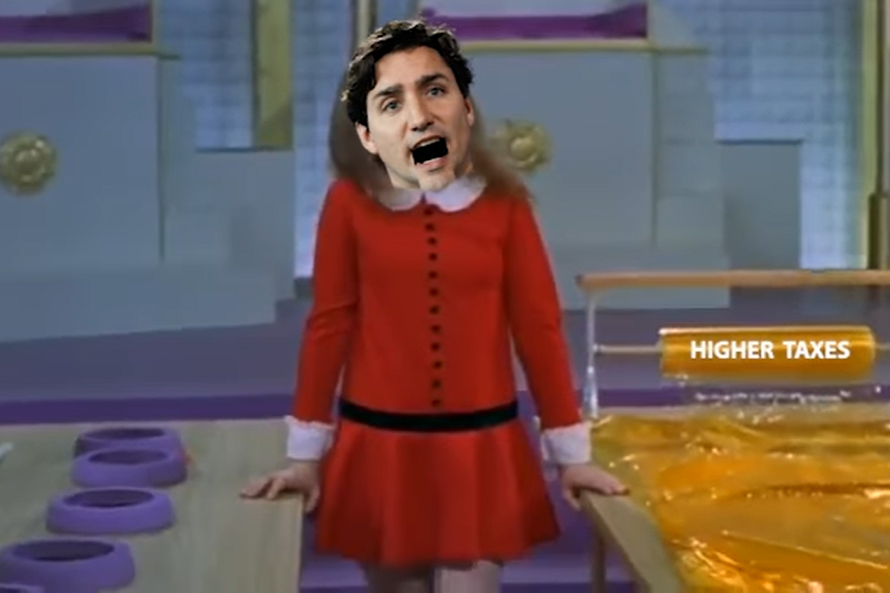Since the onset of COVID-19, I’ve had more time to indulge in social media. By “indulge,” I mean doomscrolling about anti-vaxxers, environmental collapse, and the still-darkening legacy of residential schools. I’m no different from others. According to a study in the U.S., social media consumption rose to 82 minutes a day in 2020, up from 75 the year before — with many folks refreshing their screens to find case-count statistics. I’m guessing we’re online more for lack of better options.

With an election in Canada, I spent a day looking warily at the social-media campaigns of our political parties. In past elections, we saw Liberal Leader Justin Trudeau on Facebook as a selfie-Jedi, materializing before any camera poised to click, and New Democratic Party Leader Jagmeet Singh mug on TikTok. I wanted to know how, if at all, social media has changed in the pandemic era.
Political parties usually dramatize an election as an existential struggle. But can they raise the stakes when many Canadians literally fear for their lives when they go buy groceries or breathe? As I follow the campaign on Twitter, Facebook, and TikTok, I want content that’s realistic but doesn’t prompt me to cower in terror. I want the promise of normalcy — no, of decency.
To my dismay, my election timeline is already fouled with slung mud. Liberal candidate Chrystia Freeland has a “manipulated media” label affixed to a Twitter video. A Conservative attack ad, in which Trudeau’s head is superimposed on a clip from Willy Wonka and the Chocolate Factory, was removed for copyright infringement. It was also sophomoric and weirdly dated. And I say this as a university prof who plays Ferris Bueller clips in his lectures.
Before I started, my working hypothesis was that Trudeau had the right combination of winning smiles, smiling cynicism, and shameless opportunism to carry the Liberals to a majority. In B.C., where I live, it worked for John Horgan’s NDP in 2020, as it broke a pledge with the Green Party to hold off on an election for another year, and took advantage of an electorate’s natural inclination not to change governments in the middle of a once-in-a-lifetime crisis (dear lord, I hope) to scoop up a majority.
Surely, Trudeau would maintain his sunny ways, smizing in his Liberal Party of Canada-branded facemask? But in week two of the campaign, with Liberals’ losing their lead on the Conservative Party of Canada, Trudeau goes on the offence. On the Liberals’ Twitter page, in between big-ticket promises like subsidized daycare and another national housing plan, one finds a video, attacking Conservative Leader Erin O’Toole’s support of private healthcare options. The strain shows in this whipped-up clip, filmed in a bus parked outside a rich person’s house. It’s like someone handed Trudeau an iPhone and said, “Quick! Say something about Erin O’Toole that will make oldsters panic!”
After decrying the election as a Liberal power grab, the Conservatives have wisely tacked away from whining as its primary campaign tactic, and toward true-blue themes like fiscal probity. In one video, leader Erin O’Toole engages Canadian seniors in a discussion about securing their retirements. O’Toole’s reassuring delivery and anti-corporate message (um, which party is on the right?) is undercut by the video’s shabby look. Is the stock video footage of a change jar filing up supposed to represent a pension or the panhandling that old folks will do to make up for declining CPP payouts? Also, we don’t use pennies anymore.
Of my own criteria for social-media comfort food, only the leaders of Canada’s smaller parties deliver. Annamie Paul looks stately and confident in a Facebook video that rebrands the Green Party as one of diversity. Somehow she advocates for climate action while not invoking the image of our world burning to a cinder. In the Bloc Quebecois campaign video, leader Yves Francois Blanchot touts Quebecois exceptionalism with a rocking pocket square.

Get breaking National news
And while the People’s Party of Canada scares me personally, the noxiousness of their Donald Trump-style nativist rhetoric is offset by their small grip on the electorate and truly goofy social media. The party posts “help wanted” ads for candidates in eight ridings, while one candidate, Vahid Seyfaie, Photoshopped his face on an image of Prince William.
I’m saving the best for last, though, as Jagmeet Singh’s videos for the NDP still amuse and delight. Singh’s TikToks, set to jaunty music, with minimalist Dad-style dancing, connect the way selfies once did for Trudeau:
Of course, Singh brought his TikTok game to the 2019 election and still his party lost ground. Singh speaks to me as a racialized Canadian and his calls to cap cellphone fees are like a Spotify playlist to his youthful supporters, but he still needs to convince older voters that he can form a government or influence any government formed by Trudeau and the surprisingly pinkish O’Toole. Watch the following video, with Singh’s bedroom eyes and his understated finger pointing to cool music I’m too old to know, and imagine if the message above it read something like, “Tell your parents you’ll go to law school if they vote NDP!!”
I finished my 24 hours of election doomscrolling feeling oddly reassured. The politicking may be a notch muted, given 18 months of uncertainty and fear, but our politicians remain steadfastly bland and on-message. It’s early in the election campaign, and things might change, but let’s hope they don’t. I’ve had my fill of “interesting” for the year.
Kevin Chong is an author and Creative Writing professor at UBC Okanagan.







Comments